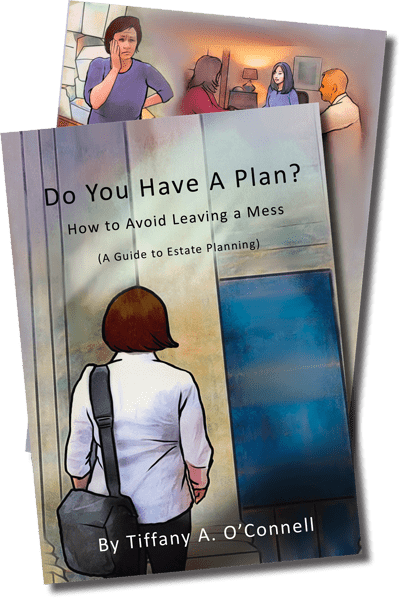|
March 2022 |
|
|
|
The VA Aid and Attendance Program Helps Eligible Veterans Pay for In-Home Care |
|
The VA Aid and Attendance Pension Program provides eligible veterans who need long-term care with tax-free income. This benefit can also be used by surviving spouses of eligible veterans. An eligible married veteran can receive up to $2,431 per month to help with the cost of long-term care while a surviving spouse can receive up to $1,318 per month.
The benefit is paid directly to the veteran by the United States Treasury and does not need to be paid back. It can be used to pay anyone, even the veteran’s adult children, for home care. It can also be used to pay for professional care in the home, assisted living, nursing home care, and more.
In essence, Aid and Attendance allows an eligible veteran or widowed spouse to live at home and receive necessary care while protecting their hard-earned life savings.
To be eligible for Aid and Attendance a veteran must:
|
|
|
For a surviving spouse to be eligible for Aid and Attendance, he or she must have been married to an eligible veteran for at least one year and never remarried.
Many veterans mistakenly believe that they have too many assets or too much income to qualify for the VA Aid and Attendance Pension Benefit. While it is true that the VA requires veterans and their surviving spouses to qualify both medically and financially, it is not necessary to run out of money before you can begin receiving benefits.
A qualified elder law attorney can use available exemptions and other tools to help an eligible veteran obtain Aid and Attendance without spending down all of his or her assets. |
The Truth About Using Medicaid to Pay for Nursing Home Care |
|
|
|
Approximately 50% of all Americans who reside in nursing homes receive assistance from Medicaid to pay for their care. This is not surprising, given the extraordinarily high cost of long-term care. The real surprise is that half of all Americans don’t seek Medicaid assistance to cover nursing home costs. Why not? |
|
Perhaps the biggest reason is the preponderance of misinformation about Medicaid, the cost of long-term care, and how to pay for it. Here are just a few examples of the myths surrounding the use of Medicaid to pay for nursing home care:
Myths like these often come from well-meaning family members, friends, and neighbors. While none of them are true, many people believe that they are.
Sometimes misinformation is spread by people we assume to be knowledgeable about the subject—nursing home intake staff, caregivers, physicians, nurses, and social workers. They might tell you, for instance, that you are too wealthy to receive assistance from Medicaid. Or that once you have moved to a nursing home it’s too late to obtain Medicaid assistance to pay for your care. Again, these folks mean well, but their information is often outdated or simply inaccurate. The fact is Medicaid planning is complicated and the rules governing eligibility for various programs are constantly changing. Even attorneys who do not focus on this area of the law may be a source of inaccurate information.
Don’t let misinformation prevent you from getting the financial assistance you need. Speak to an attorney with extensive experience in helping families obtain Medicaid assistance to pay for nursing home care. |
What Services are Covered by Medicare? Find Out by Using Medicare’s Free App |
|
|
|
Does Medicare cover a test or procedure recommended by your doctor? You’ll know at a glance if you use Medicare’s “What’s Covered” app. It can be downloaded for free in both the Google Play Store and the Apple App Store. |
|
This app lets you search for specific services or browse a list of alphabetized services to determine what is covered by Medicare Parts A and B. You can also access basic information about costs.
While the app provides an extensive list of the services, tests, and procedures covered (or not covered) by Medicare, it does not take into account a user’s specific co-insurance, supplemental insurance, or deductibles. |
|

|
Upcoming Events |
|
WEBINARS
5 Things all Kids Must Consider as their Parents AgeTuesday, April 5 5:00 PM - 6:00 PM Wills & Trusts 101Wednesday, April 20 5:00 PM - 6:00 PM Protect Your Adult Children After Your Death With TrustsWednesday, April 27 5:00 PM - 6:00 PM How to Plan for the Second Half of LifeThursday, April 28 12:00 PM - 1:00 PM 5 Things all Kids Must Consider as their Parents AgeTuesday, May 3 5:00 PM - 6:00 PM Can Estate Planning Protect My Children?Monday, May 9 12:00 PM - 1:00 PM
ZOOM MEETINGS
Can Estate Planning Protect My Children?Monday, April 11 12:00 PM - 1:00 PM Open Office Zoom – How To Pick Your HelpersWednesday, April 13 12:00 PM - 1:00 PM Open Office Zoom – How To Pick Your HelpersWednesday, May 11 12:00 PM - 1:00 PM Register today to reserve your spot!
Additionally, registration for these events is critical so that we can contact you if it is prudent to cancel this session or if we need to change how we are able to offer this to you.
|
A Personal Note From Tiffany |
|
|
We’re honored to be able to share in this newsletter an image captured by Kari Heistad of a majestic owl. The image makes me smile and reminds me that there are simple joys in life that can be experienced daily if we just stop and look. As we head into Spring, especially when you are outdoors, take a few minutes every day to just stop and experience what’s going on around you. |
|
|
Watch for the flowers starting to pop up out of the ground, the chirping of birds as they make their return north, and how green and colorful things become again.
As always, thank you for taking the time to read and reflect.
Sending you all a remote hug,
|
Finally, an Estate Planning Guide for Everyone! |
|
|
Many books about estate planning are long, complicated, and written in a way that’s hard to understand. Not this one!
Do You Have a Plan? How to Avoid Leaving a Mess (A Guide to Estate Planning) is written by estate planning and Certified Elder Law Attorney Tiffany A. O’Connell. The book is a quick and enjoyable read, thanks in part to wonderful illustrations by Joy Murphy. The book can also be used as a reference guide to easily review important planning concepts in the future.
|
|
|
|
3 Eliot Street | Natick, MA 01760 |










